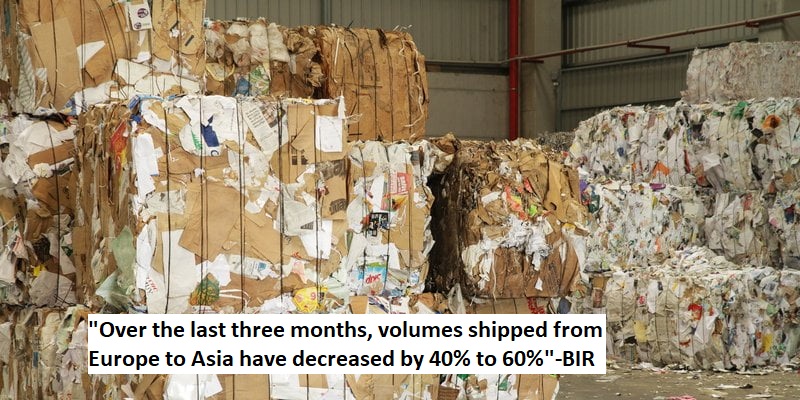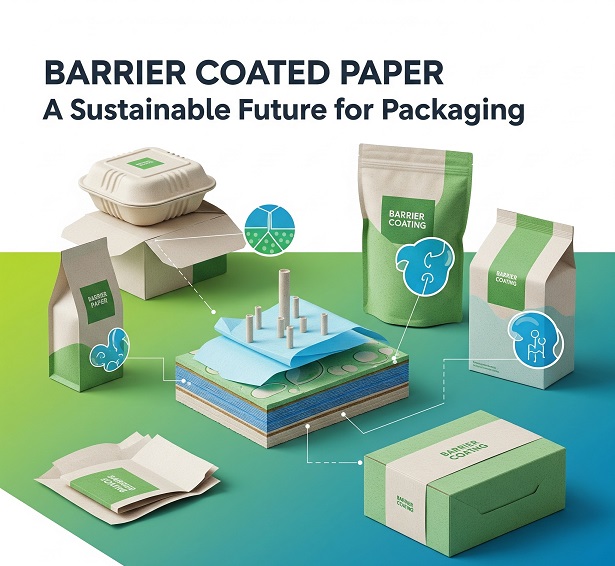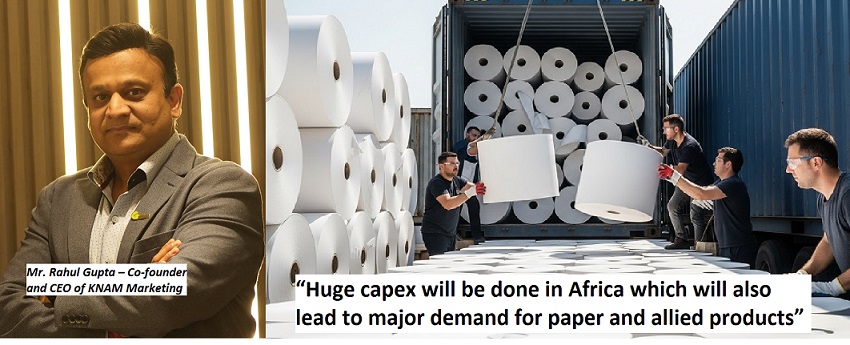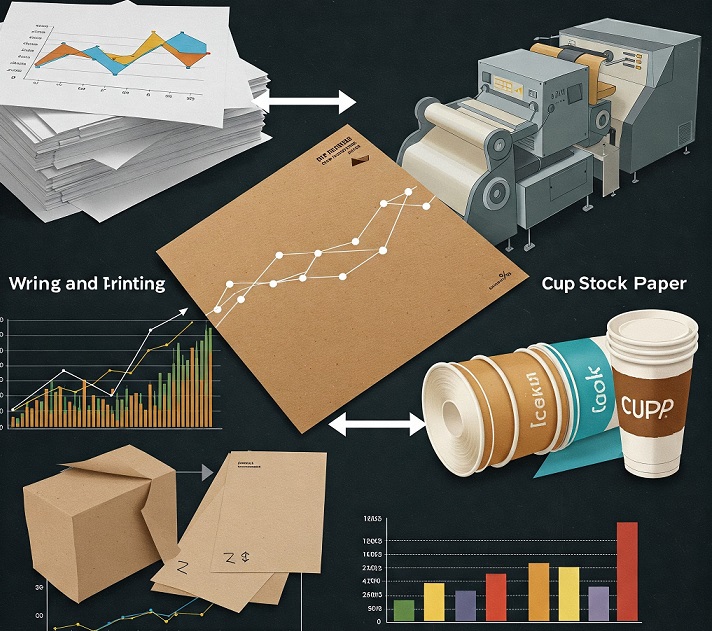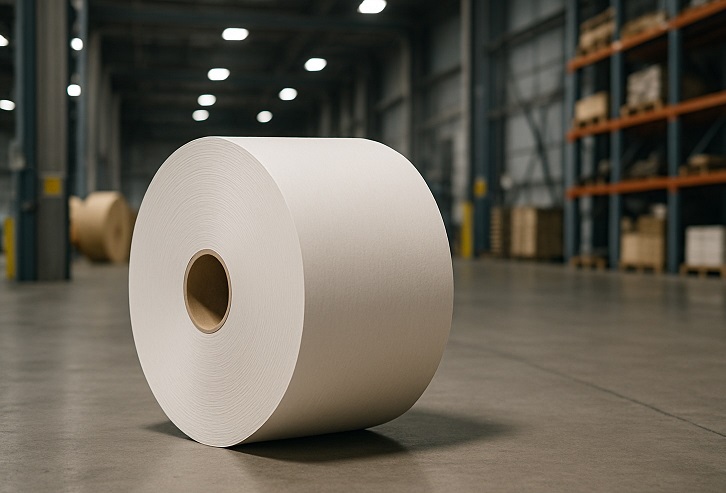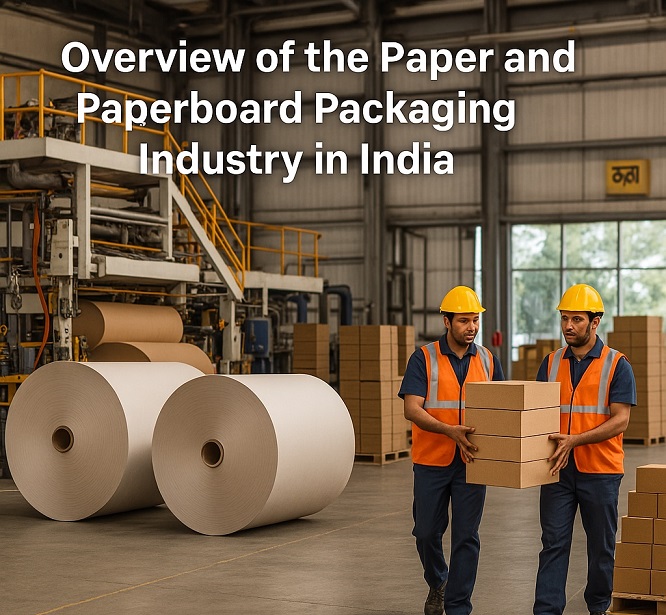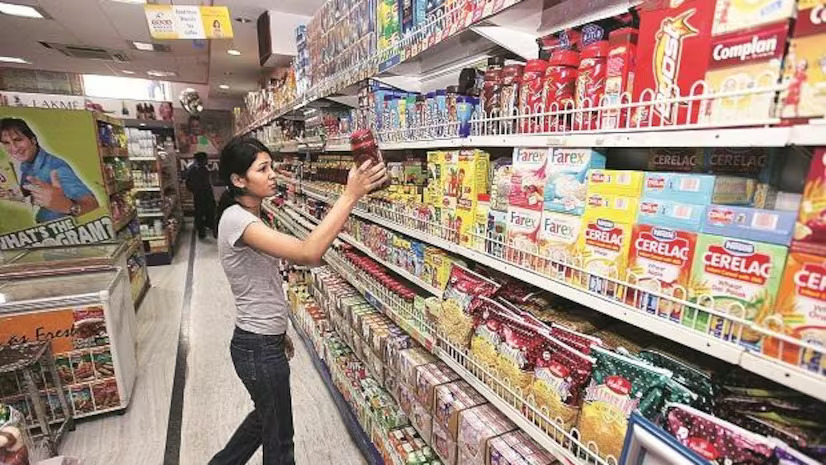Indian Paper Industry: An Overview, Risks and Opportunities
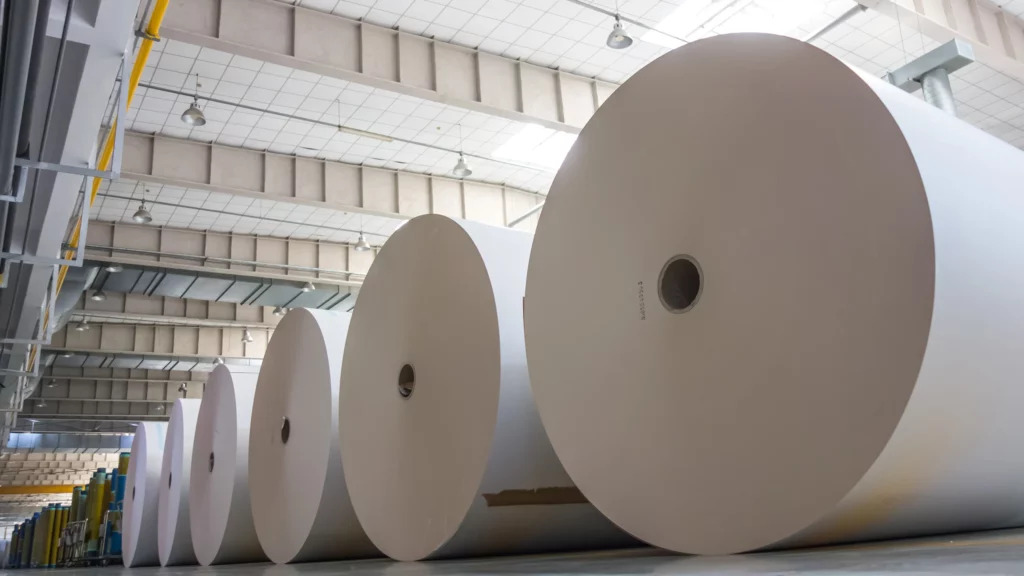
Indian Paper Industry: An Overview, Risks and Opportunities
- The growth in the packaging segment of the Industry is expected to be based on recycling of waste paper
- Government must come up with a clear policy on pulpwood plantations in terms of introducing more virgin fiber into the fiber basket.
- The lucrativeness of the demand for Roll Pulp from Indian mills, has since disappeared but brought new, low-end capacities of Containerboard into the Indian market resulting in a capacity overhang in India.
The Pulp and Paper Times :
Industry Structure & Developments :
The Indian Paper Industry has been historically segmented on a three dimensional matrix identified by size, grades manufactured and raw materials utilised. Government policies on indirect taxation rates applicable to output have relied on this segmentation. Generally, tariff rates have protected smaller units utilising “unconventional” raw material. Over the years, the growth of various segments, investment levels in specific segments, technological changes, industry fragmentation and intensity of competition have been significantly influenced by the Government’s tariff policy.
Over 600 players currently populate the domestic industry and the estimated output across all grades is about 20 million metric tonnes per annum (MTPA). Global paper consumption is about 400 Million Tonnes per annum and about 50% is recycled each year. Global demand forecast for the year 2030 is 480 Million Tonnes. The three broad segments of the market are Writing and Printing Grades (Cultural), Packaging Grades (Industrial) and Newsprint.
The “Industrial” Segment of the paper market broadly comprises of Corrugated Case Materials,(CCM) and Duplex Boards -white lined and coated or uncoated. Fragmentation is severe in this segment which constitutes about 50% of the total output of Paper & Board. This segment entirely relies upon “unconventional” raw material such as waste paper (imported and domestically sourced) and, to a limited extent, on agricultural residues. The average size of units in this segment is now about 15,000 MTPA and most units cater to local area demand from small semi auto corrugated box factories and small printers. Although the other segments in the Indian paper industry are also fragmented by international standards, the degree of fragmentation is less severe.
Historically, the bulk of the output of “Cultural” grades - comprising of writing, printing, office stationery paper and speciality paper has been the preserve of the larger producers, who use forest based raw materials in integrated pulping facilities augmented by imported market pulp. This segment has been consistently taxed at higher rates due to its size and use of “conventional” forest based raw material. Investment in plant for these players has also been higher. With a relatively smaller number of players and high import tariff protection, prices of end products, generally perceived to be of higher quality, have been high. “Lower end cultural grades” manufactured by smaller players using unconventional raw materials in low investment, low-tech plants cater to consumers in the price sensitive subsegment of this market. This sub segment has historically depended heavily on the tariff differential based on size and raw material for its viability. Some of the mid-sized players in the writing and printing segment are in the process of expansion and modernization and are installing wider/faster machines with full fledged de-inking plants to produce the higher quality that is increasingly preferred and for which consumers are willing to pay more. Several of the “large-integrated” forest based producers have also recently increased forest based pulping capacities The cultural paper segment contributes about 35% of the annual paper and paperboard production with a current demand growth rate of about 6 to 7% per annum. The high investment levels required and limited “conventional” fiber resources are the major deterrents to growth in this segment for both existing players as well as new entrants.
The Indian Paper industry which accounts for about 4.5% of global production, in recent times has registered faster growth rates of about 7%. The domestic demand is expected to grow at about 6 to 7% p.a. Paper industry plays an important role in the socio-economic development of the country.
Despite several infrastructural impediments there is a strong growth in demand in several sub-segments of the Indian Paper Industry. There is perceptible shift in preference for higher quality products in both the Industrial and Cultural Segments and players with the right grade-quality mix are seeing opportunities for profitable growth. As per our assessment, most of the dominant players in each industry segment will be operating near to capacity and one can expect a round of capacity additions which will however be circumscribed by factors peculiar to individual units such as the ability to raise funds cost effectively, availability of raw material and low cost energy.
ii) Opportunities & threats:
The Indian Government’s policy for the paper industry lacks perspective. It is necessary that the Government come up with a clear policy on pulpwood plantations that can benefit the paper industry in terms of introducing more virgin fiber into the fiber basket. In the face of fierce global competition, sustenance of industry with only agro-based raw materials and recycled fiber will be very difficult to achieve. The Government also needs to create a more conducive atmosphere for investment into this sector.
In the medium term, much of the growth in the packaging segment of the Industry is expected to be based on recycling of waste paper. This is already the trend in China. Indian paper companies in the packaging segment are also expected to fuel their near to medium term growth through waste paper imports from regions of surplus such as North America and Europe. Much has changed in the global recycled fiber flow pattern since the imposition of a complete ban on the imports of wastepaper by the Chinese Government.
China continues to be the largest consumer of paper and board and the Chinese demand constitutes a large proportion of Global demand – particularly for packaging of manufactured consumer goods for domestic and international consumption. The complete ban on imports with effect from January 2020 of wastepaper by the Chinese Government is the culmination of a series of progressively stringent rules on the quality of imported wastepaper imposed since 2017. During the period 2018-2021, Chinese paper manufacturing capacity was hamstrung by the shortage of imported recycled paper to the extent of about 25%. This caused a spurt in prices of domestic recycled fiber and a jump in paper prices, particularly for containerboard which constitutes about 55 million MT per year of the Chinese paper demand. The shortage in containerboard supply of about 12-14 million MT was met during 2019, 2020 by imports from other regions of both recycled roll pulp and finished product. Many Indian mills, due to the generally poor quality could only meet the low-end demand of Roll Pulp during this period. Over the period, large Chinese producers began to set up world class capacities outside China, particularly in Southeast Asia, where wastepaper imports are not banned. In 2022, they fill much of the demand supply gap in the China market. The lucrativeness of the demand for Roll Pulp from Indian mills, has since disappeared but brought new, low-end capacities of Containerboard into the Indian market resulting in a capacity overhang in India. This situation is driving up domestic fiber prices and depressing finished product prices.
The China ban has also driven up Global prices of virgin pulp and consequently higher end Containerboard grades like Kraft Liner. Opportunity lies in substituting these expensive grades with high performance recycled grades with acceptable aesthetics and strength. Opportunity also lies in substituting other grades based on Virgin Pulp like mailer bag stock which has a rising demand from the e-commerce sector.
Large capacities created by Chinese groups in Southeast Asia in constitute a large demand for imported recycled waste. They also possess relative buying strengths and constitute a cost threat to that extent. Over time, however, as domestic capacities stabilize and domestic collection improves, a larger proportion is expected to be sourced domestically with the fiber basket being upgraded by pulp imports. The strength of any firm in this industry is however expected to come from a presence throughout the supply chain from raw material to packaging production and delivery.
Whilst this is a capital-intensive industry, the current structure of depreciation tax shields, finance (interest) costs and relatively short-term repayment horizons places severe limitations on fresh investments. This phenomenon has effectively increased the project cost on expansion and new green-field investments. At the same time, the continuous reduction of import tariffs keeps margins under pressure. The absence of large-scale investments and green field projects in a rapidly growing economy with one of the lowest per capita paper consumption rates is testimony to this situation. Further, the ban on single-use plastic is favourable to Paper Industry.
Outlook:
Growth rate of the Indian economy expected around 7% in FY 2022-23 as against 8.5% (on lower base of earlier year due to Covid-19 effect) )in 2021-22 .
Demand for paper in FY 2024 is expected to revive towards the end of first half, after the sluggish demand in the past one year, as a fallout of inflationary conditions prevailing globally, which seems to have corrected to a great extent, as a result of measures taken by the Central Banks during the past one year.
Innovative cost containment and cost cutting will be required by paper mills to not only maintain business volumes but to capture a larger portion of a slowly growing pie.
Risks and Concerns:
New, large scale manufacturing capacities are being created in several down-stream industries such as electronic goods, white goods, cell phones and fast moving consumer goods. These industries that have been seeing a year-onyear growth of 8 to 10% are expected to also slow but not as much as the general slowdown in the economy.
The Government has also prioritized policies aimed at promoting rapid up-gradation in supply chain systems for retail distribution and export of fruits and vegetables. The automotive components industry is also growing and demanding wooden packaging substitutes. The footwear and garments exports segments are growing but at a more moderate pace as export markets slow.
All these and other trends indicate that there will be a better than average growth in the demand for high-quality, world-class packaging material produced in state-of-the art facilities and delivered just-in-time.
Whilst one would ordinarily expect these trends to encourage strong players in the paper converting industries to either expand or paper producers to forward integrate and seize the opportunities for growth, this has not actually happened due to the uncertainty from the flip flop tariff policy decisions.
Historically, the policy of “reservation” of this industry for the small scale sector has resulted in extreme fragmentation with low productivity, small capacities and poor quality of output. The indirect tax structure and the industry structure of consuming industries highlighted earlier allows these capacities to continue to exist albeit marginally and this production base continues to supply the existing demand, its survival being circumscribed by the tax/tariff structure applicable to users of packaging material
The above report has been extracted from the annual report of The South India Paper Mills Limited for FY 22-23
Web Title: Indian Paper Industry: An Overview, Risks and Opportunities





 Join WhatsApp Group
Join WhatsApp Group Join Telegram Channel
Join Telegram Channel Join YouTube Channel
Join YouTube Channel Join Job Channel (View | Submit Jobs)
Join Job Channel (View | Submit Jobs) Join Buy Sell Channel (Free to Submit)
Join Buy Sell Channel (Free to Submit) Paper News Headlines Channel (Free to read)
Paper News Headlines Channel (Free to read)




